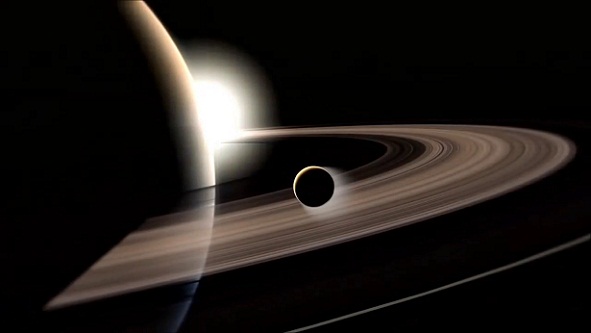| Online: | |
| Visits: | |
| Stories: |

| Story Views | |
| Now: | |
| Last Hour: | |
| Last 24 Hours: | |
| Total: | |
Mysterious ‘Lakes’ & Polar Winds On Saturn’s Moon Titan (+Video)
Mysterious ‘Lakes’ & Polar Winds On Saturn’s Moon Titan
It turns out that Saturn’s moon Titan is way more similar to our own planet than we thought.
Scientists previously discovered that Saturn’s largest and haziest moon is the only object in the solar system — aside from Earth — to have lakes, rainfall and seas. Like Earth, it’s bigger than the planet Mercury and has a rocky surface.
A new study using data from the joint NASA and the European Space Agency (ESA) Cassini mission suggests the moon’s surface dissolves in a process that’s similar to the creation of sinkholes on Earth.
The lakes are generally not associated with rivers, and are thought to fill up by rainfall and liquids feeding them from underground. Some of the lakes fill and dry out again during the 30-year seasonal cycle on Saturn and Titan. But exactly how the depressions hosting the lakes came about in the first place is poorly understood.
http://www.nasa.gov/feature/the-mysterious-lakes-on-saturns-moon-titan
And now, scientists have found something else that Titan and Earth have in common: Polar wind. In fact, the widespread polar wind is driving gas from Titan’s atmosphere out into space.
Scientists discovered the escaping gas after analyzing data from NASA’s Saturn-orbiting Cassini spacecraft’s Plasma Spectrometer (CAPS) instrument, which had detected particles escaping from Titan’s atmosphere. Based on the distinctive spectra of particles detected, the researchers concluded that there must be a widespread polar wind on Titan.
Titan’s atmosphere is made up mainly of nitrogen and methane, with 50 percent higher pressure at its surface than on Earth,
Data from CAPS proved a few years ago that the top of Titan’s atmosphere is losing about seven tonnes of hydrocarbons and nitriles every day
This cloud in the stratosphere over Titan’s north pole (left) is similar to Earth’s polar stratospheric clouds (right). NASA scientists found that Titan’s cloud contains methane ice, which was not previously thought to form in that part of the atmosphere. Cassini first spotted the cloud in 2006.
A paper describing the new research was published online in the journal Geophysical Research Letters on June 18, 2015.
http://onlinelibrary.wiley.com/doi/10.1002/2015GL064474/full
Space.com http://www.space.com/29700-saturn-moon-titan-earth-like-winds.html

Image credit: NASA



